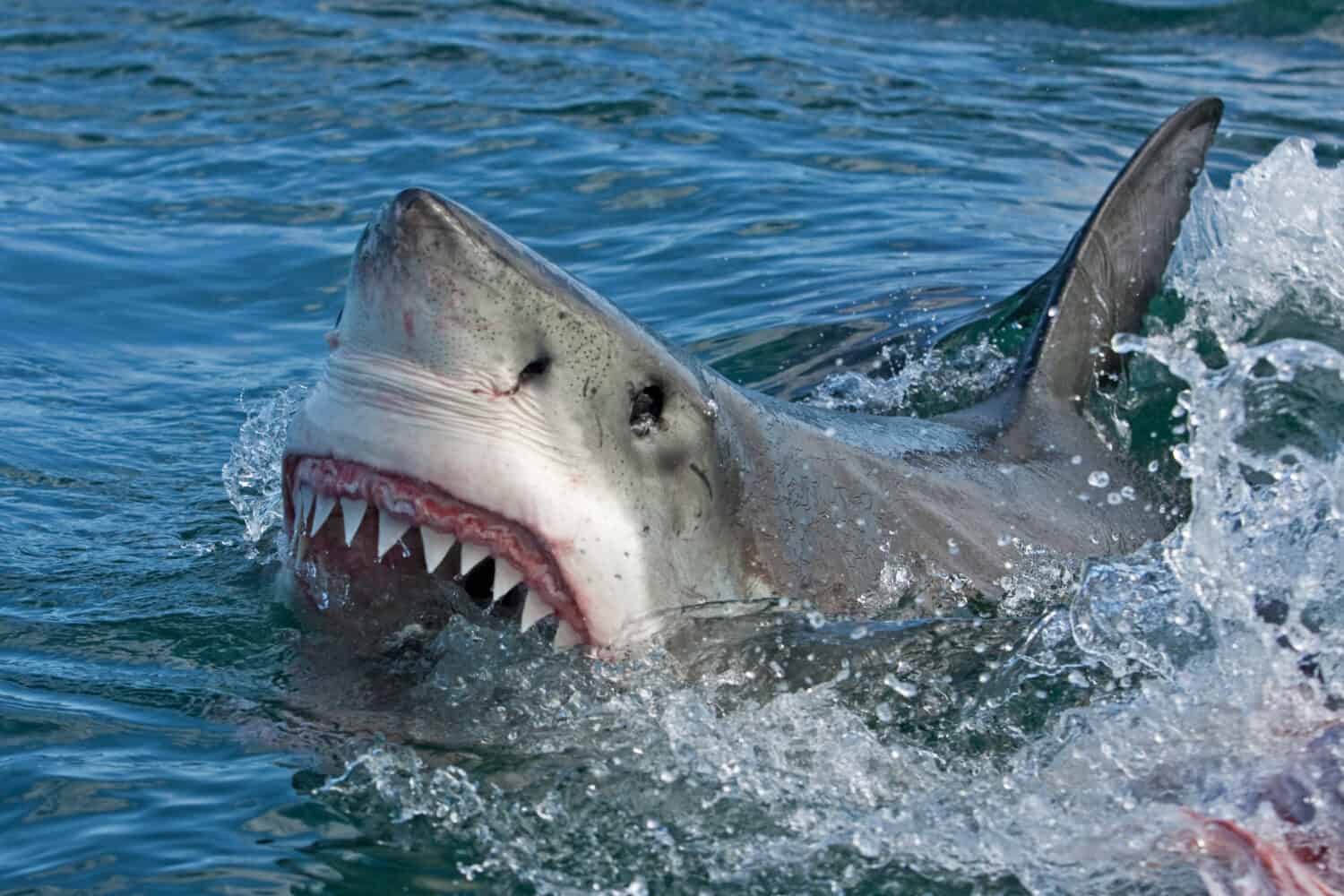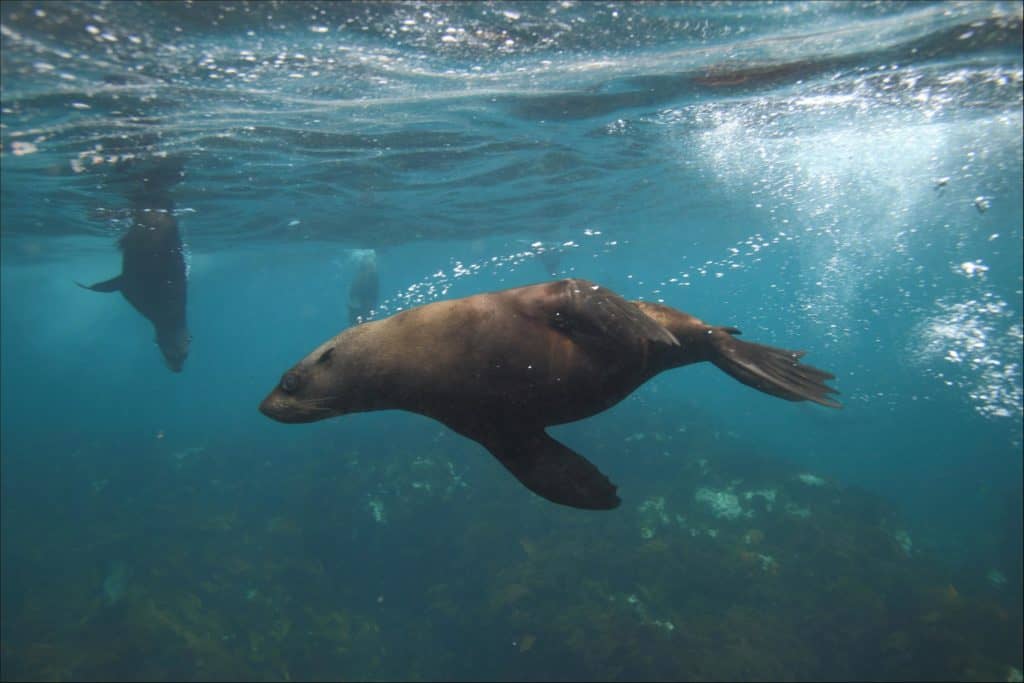Continue reading for our analysis...

With the advent of drone videography, murky water is no longer a barrier to collecting amazing shots of sharks in their natural environment. Using this perspective, we can learn a lot more about how sharks behave. In this particular case, we get to see a great white shark move from the open water into an area close to some rocks.
As the tide rises, the predator can get even closer to the rocky crevices. It knows that this is a favorite hiding place for seals and is therefore an area where it can find a meal! Several sharks are using the same strategy.
Suddenly, a Cape fur seal breaks cover and the shark spots it at the same time as we do. It changes direction and accelerates towards the target, and the outcome is inevitable. The only consolation is that it was all over very quickly for the seal.
Where and How Do Cape Fur Seals Normally Live?
Cape fur seals are also called South African fur seals and their scientific name is Arctocephalus pusillus. They are a member of the Otariidae family which contains other fur seals and sea lions. As their name suggests, they are found along the coasts of South Africa. Their range covers the southern and southwestern coasts of Africa, as far east as Namibia.
However, they are also located along the southeastern and southern coasts of Australia. Therefore, you can find them in waters off Victoria and New South Wales.
Their preferred habitats are close to the land. They have been spotted up to 100 miles from the shoreline but this is rare. They gather on the mainland or small islands for breeding and they have a preference for small and rocky islands.

Seals have a layer of blubber on their bodies which makes them a nutritious meal for sharks!
©Alessandro De Maddalena/Shutterstock.com
When it comes to diet, they eat mainly fish but supplement this with squid and crab. The rest of their nutrition is made up of other cephalopods and crustaceans although they have also been known to catch birds.
These are not small animals! They can weigh up to around 700 pounds and can be over seven feet in length. Seals also have a layer of blubber which is adipose tissue (fat) covering their bodies. It provides the seal with insulation, buoyancy, and energy storage.
Unfortunately, that also makes them a calorie-rich and therefore very attractive food source for several marine predators. One of the most formidable of these is the great white shark as we get to see in this clip!
Thank you for reading! Have some feedback for us? Contact the AZ Animals editorial team.







